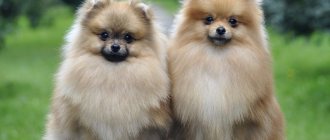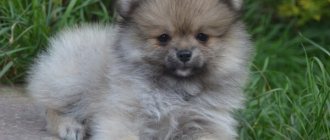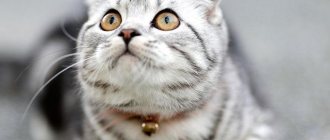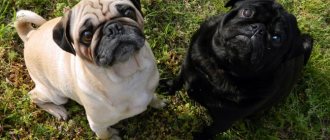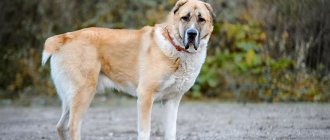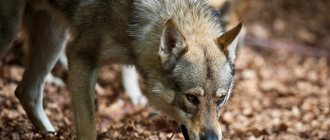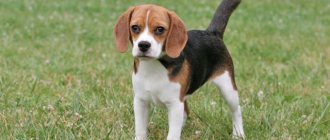The young breed of Bambino cat appeared not so long ago and has not been sufficiently studied. The Bambino is a Sphynx-Munchkin mix that has passed on its distinctive genes: short legs and no hair. Externally, the breed resembles a dachshund.
The period of appearance of the breed was 1999 in the USA, Osborne. She was bred completely by accident, but managed to gain great popularity among cat lovers, especially those who suffer from allergies.
These cats have delicate skin that feels like velor. There are similarities with the sphinx, but bambinos are much more sympathetic to humans due to a number of distinctive qualities. The owners of these pets note their unpretentiousness in food and care, affection, and love for the owner.
Appearance of a cat
The main characteristics of the bambino's external features are listed in the table, but may vary slightly. The most beautiful individual is considered to be the bambino with bright blue eyes and short legs, such as can be found at exhibitions.
Show cat bambino
| Torso | Stocky, strong, barrel-shaped body. Pronounced muscles. Height is from 10 to 20 cm. Average weight is from 2.5 to 5 kg (males are larger in volume than cats). Adults reach 3 kg with a normal balanced diet. |
| Head | The large, lemon-shaped eyes are set wide apart and come in a variety of colors. The ears are straight, fairly large, wide at the base, set far apart. Heart-shaped head. |
| Paws | Short, muscular, folds gather closer to the fingers. Participation in exhibitions is granted only to individuals with short legs. |
| Tail | Long, thin, without folds, in some cases there is a tassel at the end. |
| Wool | There is no hair, in some cases it is on the ears, paws, muzzle, tail or scrotum. The skin color is predominantly light with the addition of gray and pigmentation. |
| Lifespan | from 7 to 15 years. |
Exterior
In appearance, bambinos are very similar to the Canadian Sphynx. They have the same muzzle, identical body structure, and coat quality. Only the length of the limbs differs.
Bambino is often compared to a dachshund due to its short legs and elongated body.
Table: Bambino breed standard
| Sign | Characteristic |
| Torso | The body is medium in size, but elongated. The weight of an adult cat is 2 – 4 kg. Athletic build, well-developed muscles. Wide and massive chest. Big round belly |
| Neck | Powerful, medium length |
| Head | Proportional to the body. Wedge-shaped, round, slightly elongated. Pronounced cheekbones and pads with short whiskers (they may not exist) |
| Eyes | Large and expressive, widely spaced. They are shaped like a lemon. They can be blue or green, less often yellow or gray. The color should be in harmony with the coat. Heterochromia (eyes of different colors) occurs |
| Ears | Large and widely spaced. Wide at the base and gradually tapering towards the ends. Rounded tips |
| Limbs | Short but muscular limbs. The paws are oval in shape, the pads are large and thick. The fingers are long. Hind limbs may be longer than forelimbs |
| Tail | Flexible, resilient and thin. Medium length, should be proportional to the body. Tapers to the tip |
| Leather | The skin is hot to the touch, velvety (like a peach). Covered with folds, especially on the head. Kittens have folds all over their bodies and on their paws. |
| Coat | Bambinos are not actually completely naked. There is a very short, almost invisible undercoat. In some areas of the body (ears, muzzle, tail, paws), soft and thin hair of slightly longer length is allowed |
| Colors | Any colors are allowed, including combinations with white (bicolor, harlequin, van) and color point. But solid colors are most valued |
Thick paw pads are a distinctive feature of the bambino.
Possible defects:
- frail physique, underdeveloped muscles;
- defects in the structure of the tail (kinks, fused vertebrae);
- short body;
- excessive amount of hair.
Photo gallery: bambino colors
The color point color is found not on a milky, but on a gray background
The gray monochromatic body color is very beautiful
White color is the most popular
A black cat is a valuable specimen for breeders
Bambinos have different colored eyes (heterochromia)
History of the breed
A US family in Osborne first saw the strange breed of kitten - the result of crossing a Sphynx with a Munchkin - and were struck by its cute appearance and suede-like skin. The couple accepted the ridiculous kitten into their nursery and took care of registering the new breed. In 2006, the bambino breed was registered with the International Cat Association (TICA) as an experimental breed. The couple came up with the name of the breed themselves.
Munchkin
Sphinx
Breeding in Russia was carried out by a breeding specialist. The breed was registered in the Russian Federation in 2005, called Minskins, but after registration in the international registry they received an American name.
Exhibition standard
The breed is not officially recognized. Selective work is still ongoing. Experts from FARUS (International Felinological Organization of Russia) have already decided on preliminary features, which in the future will become the basis for the subsequent approval of the standard.
TICA is in no hurry to register Bambino, although it recognized it as experimental. The rules of the association include a decree prohibiting the crossing of Sphinxes to obtain a new species (in Germany this is considered cruelty to animals). However, TICA is ready to consider the hybrid as a variety of Minskin.
General appearance
Bambino absorbed two dominant mutations of her ancestors. From the Canadian Sphynxes they inherited almost complete hairlessness. Munchkins shared their dwarfism gene and good-natured, affectionate character. As a result, a bald, short-legged cat was born, which lost its grace, but acquired a funny manner of movement.
For your information! Representatives of the Bambino breed are not prone to diseases of the spine. Their small paws are strong and muscular, which allows them to easily withstand a weight of up to 4 kg while leading an active lifestyle.
Head
Small, with rounded shapes. Resembles a wedge shape. The length slightly exceeds the width. The pinch-break is clearly expressed in combination with embossed, convex cheekbones. A straight nose with a small but visible transition in the area of the bridge of the nose (stops). Only dark shades are allowed. The same color of the nose and body is considered a defect.
The muzzle is medium. The whisker pads (cheeks) are well developed (FARUS allows for their complete absence, rare appearance, and fractures). Prominent chin, but not too large in comparison with the head as a whole. Should be in line with the tip of the nose.
Ears
The ears are large. The bigger, the better. Small ones are counted as a disqualifying fault. Wide, deep, leaf-like. Slightly apart in opposite directions. The distance should not exceed the length of one ear at the base. Not too high, but not too low either. Their beginning coincides with the line of the eyes. The inside is hairless. The presence of small velor on the outside is not a disadvantage.
Very expressive eyes
Eyes
The eyes are big. The shape is more similar to a lemon than to an almond. Widely spaced. The distance between them is the length of one eye. If you draw an imaginary line, it should go through all the corners and smoothly transition to the outer base of the ear.
The color of the iris is uniform, matching the color of the skin. Any shade is allowed, but green or blue are often found. Much less often – yellow.
Body
Small but very strong neck. Curves slightly from shoulders to skull. In adult males, the muscles can be very developed, making them appear even more powerful in appearance.
The body is long and elongated. Muscularity is clearly visible. Equal width for shoulders and hips. The chest is deep and noticeably rounded. Pear-shaped belly. The dorsal line should rise just above the level of the shoulder blades and smoothly transition to a powerful, muscular croup. The back rises noticeably when the cat is standing. The skeleton is heavy, but medium type is allowed. The tail is proportional and long. Thick at the base, tapering strongly towards the tip. Pronounced sexual dimorphism.
The limbs are strong, powerful, and short. The hind ones are noticeably longer. Straight when viewed from behind. The front ones go around the chest, smoothly turning into the forearms. The elbows are firmly attached to the chest. The shoulders, forearms, shins and thighs should be almost equal in length.
A characteristic feature is thicker legs compared to other breeds. There are always a lot of folds on them. The length of the limbs varies, but the most preferred option is 1/3 of the total height at the withers.
Skin covering
The impression of hairlessness. Short soft hairs must be present on the tail, limbs, scrotum and on the outside of the ears. On the rest of the body the velor coat varies. Perhaps its complete absence or a soft cover of a maximum length of 2 mm.
The skin is pleasant to the touch. Reminds me of wax or rubber. Soft, dense. Folds on the face, neck, ears, shoulders, and limbs. The greatest number of them should be on the front legs from the elbow to the toes.
Breed standard
A document regulating the important characteristics and description of a cat breed is called a breed standard. It is used by breeders and breeders to assess the conformity of animals with their pedigree characteristics and by livestock specialists when grading farm animals or by judges of exhibition events when determining the degree of pedigree characteristics.
Zootechnicians are specialists in the issues of breeding, keeping, feeding and caring for farm animals, assessing their benefits and quality in the final product with the least amount of labor and funding.
Valuation is the determination of the productivity of the qualities of animals by assessing them according to a number of characteristics of the breed.
Bambinos have the following parameters specified in the standard:
- head of medium size, elongated towards the top of the head;
- the mustache is completely absent or short in length;
bambino muzzle
bambino muzzle:
- straight skull with clearly visible cheekbones;
- nose straight;
- the neck is powerful, of medium length;
- small chin;
- expressive eyes are located widely apart and have the shape of a lemon;
- the ears are leaf-shaped, set far apart, wide at the base;
- the body is muscular, the legs are short but wide, the shoulders and hips are the same width;
- the shoulders are muscular, the back is slightly curved upward, the chest is round;
- medium or heavy skeleton;
- The length of the shoulder is equal to the forearm, and the lower leg is equal to the thigh;
- paws are oval with long toes pointing forward;
- the tail is long, powerful, smooth, rounded at the end.
Estimation of breed characteristics
| Adaptability: |
| Shedding level: |
| Social need: |
| Grooming: |
| Ease of care: |
| Attachment to family: |
| Hair loss/shedding: |
| Predisposition to diseases: |
If sphinxes do not seem very attractive, it is worth getting acquainted with representatives of the bambino breed. They appeared recently, but their exceptionally cute appearance and excellent character quickly make them popular. When making a purchasing decision, you need to find out everything about the breed of these hairless cats so that the surprises are only pleasant.
Colors and coat
The body of this breed is not covered with hair or has hairs up to 2 mm all over the body or in some areas.
There are clusters of folds on the neck, muzzle, forelimbs, and are barely noticeable on other parts of the body, except for the ears, back and tail. A large number of folds or their complete absence is an indicator of a lack of breed. Below is a photo.
What does a bambino look like according to breed standards?
Colors range from soft pink to dark gray or blue, pigment spots may be present. The eyes always have rich color and brightness.
Vaccinations and antiparasitic treatment
To prevent viral and infectious diseases, bambinos are routinely vaccinated against panleukopenia, calcivirosis and rhinotracheitis. The first vaccination for a kitten with short legs is given at 7-8 weeks. After 28 days, the bambino is vaccinated against the same diseases and against rabies. Subsequently, a cat of this breed is vaccinated once a year.
Important! Many vaccines are contraindicated for Bambino. Therefore, the drug should be selected by a veterinarian familiar with the characteristics of the breed.
Anthelmintic treatment of bambino is carried out twice a year with mandatory repetition after 10-14 days. The dosage of anthelmintic drugs is adjusted depending on the weight of a cat with short legs.
Character
Bambino is translated from Italian as “child”, this definition is completely suitable for these pets. The activity and curiosity of bambinos knows no bounds; they are very friendly with their owners, guests, other animals (cats, dogs, rats), and love children.
Cats are companions on any journey with their owner, they easily endure travel, become strongly attached to a person, remain loyal, feeling as comfortable as possible in his presence.
They are ready to explore everything around them, be active for a long time, run well, but jump only short distances.
Is the Bambino breed the fruit of long experiments or unexpected luck?
If you are somewhere visiting or at a cat show you see a small “bald” cat with huge ears and short legs - this is a bambino cat .
The Italian word bambino, like no other, very accurately conveys the appearance and habits of this cat, although it was chosen by chance. And the breed itself, according to history, was created by accident.
One American married couple accepted into their family a strange freak, as it seemed to them at first glance, and then purposefully began to breed them with the help of specialists (since 2005).
Around the same time, breeding work with this type of cat began in Russia. Now this breed has experimental status. There are still very few nurseries offering it, but their popularity is growing rapidly.
Allergy
Bambino is an ideal solution for those who have family members who are allergic to cat hair. Such a cat either has no hair or has small hairs that do not affect the allergy receptors.
In rare cases, irritant reactions may occur to the protein secreted by the breed, which is produced on the surface of the skin by sweat glands or during urination.
If you don't pay enough attention to caring for your cat's skin, it may begin to peel off, which will stimulate the receptors, causing sneezing and itching on the skin and eyes, especially if the person in contact has an allergy to dust.
Cat fluff and hair cause allergies
It’s easy to find out whether a bambino will cause allergies: just spend about two hours communicating with it.
Feeding the cat
To ensure that the short-legged hairless cat receives all the necessary vitamins and minerals, he is provided with a balanced diet. Many breeders recommend feeding bambino high-quality premium or super-premium dry food.
When choosing a brand, you should give preference to products from trusted global manufacturers, which do not add soy, corn, dyes or preservatives. The following foods fully meet these criteria:
- Royal Canin;
- Farmina;
- Pro Plan;
- Gemon.
If a bambino eats natural foods, its diet should contain at least 70% meat. Twice a week, chicken, beef or turkey is replaced with ocean fish and offal. Also, representatives of the Bambino cat breed must be given vegetables, eggs, cereals and dairy products.
In order not to harm the animal, the following are completely excluded from its diet:
- fat meat;
- river fish;
- sweets;
- smoked meats;
- baking;
- sausages;
- any food from the master's table.
Maintenance and care
When purchasing an active bambino, it is better to provide him with plenty of space to play and run around. He doesn't need a special sleeping place. It is much more important to pay attention to his playground, which can be represented by a labyrinth with frequent and low steps.
Play tunnels must have a long distance, but move to a height carefully, gradually, and it is also advisable to create additional safety from falls or the cat’s desire to jump from top to bottom, for example, by laying a soft landing pillow under the hole.
If the bambino frequently jumps to heights, you should provide an additional object so that the cat can jump to the target without injuring bones and joints.
Grooming
This care includes ear care, eye care, including nail trimming and skin care.
- It is recommended to clean the ears weekly using a cotton pad soaked in a special solution (purchased at a pet store). Using circular movements, dirt, grease and shine are removed from the ear.
- The eyes are washed with chamomile; it is sold in the pharmacy in the form of a packaged flower collection. Chamomile soothes the delicate skin around the eyes, clearing away impurities and secretions and protecting against harmful bacteria.
- It is enough to wipe the skin with baby lotion to remove dirt and moisturize it, preventing peeling.
Bambino grooming includes cleaning the ears, eyes, skin care, and trimming the nails.
The pet's delicate skin requires additional care.
Moisturizing the skin of a bambino is not a difficult procedure compared to grooming a fluffy cat.
Bathing a cat
Bathing procedures are carried out once a month to ensure the cat is comfortable and maintains hygiene. Pets need water treatments, because they also get dirty when they play, eat, sleep, lick themselves, and relieve themselves. Bambino skin is very delicate and there are specialized shampoos for this breed that are designed to care for hairless skin.
The shampoo is applied using a soft sponge or by hand in warm water. The area of the ears and muzzle is washed with a cotton pad or a small sponge, so as not to cause discomfort and unpleasant sensations in the cat from water getting into the eyes, nose, mouth, and you should be careful with the ears.
Bathing a bambino cat
A hairless cat loves warmth, so clothing for such cats often helps solve the problem of temperature control in the house. They treat clothes calmly, even comfortably, feeling warm and soft.
Eating bambino
These cats do not suffer from overeating due to their activity and strong mobility, are not susceptible to allergic reactions, and have a good metabolism.
You can feed the bambino the same food as other cats: ready-made dry or wet mixtures, natural food.
Natural nutrition should include boiled meat, poultry, rabbit meat, vegetables and grains.
Adult cats eat 3 times a day, kittens - up to 6 times.
Among the purchased feed mixtures, the following manufacturers are distinguished: ACANA, Royal Canin, Pro Plan, Natural amp, Hill's Science.
Royal Canin specialized food for sphinxes and bambinos
You can use food for sphinxes. The listed brands have already taken care of balancing the nutritional value with mineral and vitamin complexes; the food is offered depending on the weight and age of the cat; details can be found on the packaging in the directions for use.
Character and behavior
The character of the Bambino matches its name: cats of this breed are infinitely kind and devoted to their owners. They have no desire to hunt at all, therefore, no matter who lives in your house - a chattering parrot, a panting hedgehog, a restless hamster, another cat or dog - the bambino will quickly find a common language with him. Do not let your cat walk alone: he is in danger in the form of unfriendly animals. Bambino will not be able to repel an opponent even of his own size, so do not let your pet out of sight.
A smart and quick-witted bambino quickly learns all the rules of the house in which he lives. He runs to his litter box not only when he needs to, but also when he feels sick, so buy a container with low sides so that it is convenient for him to climb into it.
They love people and company, feel extremely uncomfortable alone and begin to break into closed doors with all their might. These are eternal children: they need constant attention, affection, lots of toys and control. Curious cats can jump from a height, stick their nose into a hot oven, try an electric wire on their teeth - in general, they have plenty of worries. Sometimes their attention is attracted by things that other cats are not interested in, so hide small and dangerous things away.
Health and illness
Dermatitis or rash on the skin of the Bambino.
The bred and registered breed appeared as a new one not so long ago. It will take many more years for a complete description of the diseases to be collected, but some features have already been noted.
- As a result of poor skin care, dermatitis or minor peeling may appear due to a lack of vitamins, temperature changes, insufficient nutrition or lack of hydration.
- Individual manifestation of allergic reactions, which is quite rare, but quite possible.
- The occurrence of tumors without sterilization and constant estrus in a cat without subsequent pregnancy.
- Hip dysplasia in rare cases due to structural features.
- Hereditary diseases: lordosis and hypertrophic cardiomyopathy.
Health
The bambino breed was bred quite recently - in 2005, so there is no data on their life expectancy. Felinologists say that on average they will live 13 - 15 years, but with good care they can live up to 18 - 20 years.
Bambinos, unfortunately, do not have a strong enough immune system, so you need to keep the house clean and prevent them from interacting with foreign animals - they can easily catch an infection. It is also important to get vaccinated in a timely manner.
As for the special structure of the cat's skeleton, surprisingly, there are no problems with this, unlike the dachshund and basset hound, which are often paralyzed due to pinched vertebrae. Bambinos, like munchkins, have a very flexible and mobile spine.
There is not yet enough data on genetic diseases, but felinologists say that bambinos are prone to developing cardiomyopathy, which was passed on to them from sphinxes. With this disease, the wall of the heart ventricle thickens, resulting in its volume becoming smaller. As a result, the amount of blood that can be pumped per heartbeat decreases. The disease has no cure; the veterinarian can only prolong the cat’s life by prescribing medications. The consequence of the pathology is chronic heart failure and death of the cat. Even with the help of ultrasound, any pathological changes are not always detected, so it is better to initially ask the breeder to confirm that the kitten’s parents are healthy. In the early stages of the disease, there are no characteristic symptoms; in an advanced state: shortness of breath, weakness, and sometimes paralysis of the limbs.
Another common bambino disease is Malassezia dermatitis. The causative agent is the yeast fungus Malassezia. It is present on the skin of healthy cats, but under favorable conditions (poor hygiene, stress, hypothermia) it begins to multiply. The first signs: severe itching, inflammation, redness, alopecia, damage to the claws (a brown coating appears). Your cat may have an unpleasant sweet odor.
The disease is easily diagnosed: laboratory specialists will take a scraping from the skin and examine it for pathogenic microflora. Treatment should be prescribed by a veterinarian. Usually the cat is washed with antifungal shampoo and wiped with chlorhexidine or a weak solution of acetic acid. These substances create unfavorable conditions for fungal growth. Antimycotic creams or ointments (Candide, Clotrimazole, Miconazole and others) are also applied to the affected areas.
Pregnancy and childbirth
The best age for the first mating is 1.5 years. Bambino offspring average up to 5 kittens. There are no difficulties in pregnancy; cats cope well with childbirth and feeding.
The owners' responsibilities include providing quality food and creating conditions for caring for the kittens. The cat will make it clear that the baby's bed is uncomfortable when it begins to move them to another place. It is important to pay attention to how the cat reacts to the prepared kitten bed before the birth itself.
During your first pregnancy, you should be monitored by a veterinarian.
Requirements for the breed standard and description of the Bambino breed
Sometimes there are claims that the bambino breed is recognized by TICA (International Cat Association), but this is not true. The current status of this breed in official circles is controversial - it is recognized as intermediate (experimental) in order to have time to wait for events that could qualify the breed as dangerous to animals.
In some countries, it is even prohibited by law to propagate “controversial breeds”. In case of repeated unfavorable situations, the breed may even be banned. But so far no such alarming observations have been identified. Therefore, the breed continues to develop (like any experimental one). And like any breed, it has a set of standard requirements to determine purity.
to confuse a bambino with someone else. Basic physiological indicators of the standard:
- Almost complete absence of hair - there is a soft hair fluff to the touch;
- Short forearm size with normally developed pelvic bones;
- The fingers are wide and stable, the fingertips are soft;
- The body is elongated, like a dachshund (similar proportions), the body is muscular, strong, the sternum is wide and free;
- Strong paw muscles;
- Triangular shaped head of medium size;
- Large triangular translucent ears with rounded ends - open and mobile;
- Bald and long rat-like tail;
- Important: there must be folds and wrinkles on the skin, including on the face, especially on the face.
The skin color of hairless bambino cats ranges from white, beige and flesh to dark gray and black. Large dark spots on the upper part of the body are allowed. In general, no special requirements for color have been developed.
Eye color ranges from gray and blue to yellow and standard green shades. Among sphinxes, and, therefore, their varieties, sometimes there is a pathology regarded as a landmark - different eye colors. The most common combination is one yellow and one blue eye. This feature does not affect the ability to see.
In social and behavioral terms, special attention is drawn to the breed’s high need for grooming (natural maintenance of cleanliness). This need manifests itself even in the short term - for example, during a two-hour exhibition, true bambinos will repeatedly declare themselves and their cleanliness.
Bambinos are very small cats, their weight varies between 2 and 4 kilograms (for particularly well-fed ones). Males are 20-25% larger than females, but with such dimensions the difference is not particularly noticeable.
Kittens
Bambino babies are very similar to Sphinxes, but as they grow older, they change and the number of folds decreases.
Bambino leather is velor, very soft. This is one of the advantages of the breed that Sphynxes do not have.
Kittens are fed 6 times a day; after 1.5 years, feeding becomes like that of an adult cat.
Bambino kittens
Breeders prepare bambino kittens for sale by vaccinating the kittens and performing anthelmintic procedures in order to give a completely healthy baby to a new home. Kittens are ready to leave their mother at the age of 4 months.
Catering
Accelerated metabolism is another feature of bambino cats, but this also poses a danger, namely gluttony, which can lead to obesity and related problems. Therefore, do not react to your cat’s plaintive meowing and paw slap on an empty bowl: feed her exactly as much as required by her weight, and do not indulge her with snacks between main meals.
Keep bowls clean. They need to be washed after every meal and the water changed 2 times a day in the mornings and evenings.
Kittens up to 4 months eat 6 times a day, over six months - 3-4 times, over a year - at least 3 times.
At first, feed the baby the same thing that the breeder fed him, and introduce new food gradually. Whether you switch it to natural food from industrial food or vice versa - it doesn’t matter, the main thing is that the products must be of high quality, without chemical additives. What is suitable for humans is not suitable for animals, so remember a few nutritional rules.
Natural products
Bambino cats, like other cats, should not be fed from your table. Human food - fried potatoes, rolls, fatty soups, etc. - causes serious health problems in animals. But they don’t taste sweets at all, they can eat it with great appetite and become seriously poisoned in the future.
The basis of natural nutrition is lean meat, dairy products, cereals, vegetables and eggs. Meat (beef, veal, rabbit, turkey, lamb) should first be kept in the freezer for a couple of days, and scalded with boiling water or boiled before serving.
It is mixed with porridge cooked in water (oatmeal, rice, corn, buckwheat, millet or semolina), adding some vegetables (zucchini, pumpkin, carrots, beets, beans), fresh herbs (parsley, dill, green salad) and a spoon of any vegetable oil (sunflower, olive, flaxseed).
3-4 times a week the cat should be given dairy products: hard unsalted cheese, cottage cheese, yogurt, fermented baked milk, natural yogurt. From time to time, meat can be replaced with offal, stewed chicken hearts, liver, gizzards, ground into minced meat. The eggs are boiled and only the yolk is given from chicken eggs, whole quail eggs.
The following products should not be given:
- Salted (including pure salt), smoked, pickled, fatty;
- Condiments, sauces, spices, seasonings, aromatic herbs;
- Offal, lard, bones (including boiled chicken, especially dangerous);
- Potatoes, tomatoes, eggplants, fruits (exception: apples, pears, melons and watermelons);
- Human drinks;
- Dog food.
Recommended food
Economy class cat food: Wellkiss, TerraCot, 365 days.
Premium: Zoogurman, Mnyams, Native food.
Super premium: Pronature Life, Summit, Vet Life.
Holistic: Orijen, Power of Nature, Wildcat.
Below are recommended super-premium foods. Links with the names of the food are clickable, on them you can, within our website, read the descriptions of the food and read reviews from owners of Bambino cats.
| Premium | Super premium | Economy |
| Sirius | Leonardo | Perfect Fit |
The vitamin and mineral complex is selected taking into account the individual needs and parameters of the animal (age, weight, activity, concomitant diseases, etc.). Popular: “Agrovetzaschita”, “Farmaks”, “8 in 1”, “BEAPHAR”, “Doctor ZOO” can be bought at any veterinary pharmacy. In addition to vitamins, the cat should be given dry brewer's yeast in courses, according to the instructions.
Advantages and disadvantages
The disadvantages of the breed include:
- high price for kittens from the nursery: from 40 to 400,000 rubles (depending on the package of documents, gender and peculiarities of skin and eye color);
But connoisseurs of luxury can note this feature, on the contrary, as an advantage, because there are fewer owners of such an interesting breed; not everyone can afford to buy an exotic pet.
- do not react well to the cold, freezing without clothes or in a cool room;
- require skin care, it is especially necessary to clean the folds.
Advantages:
- active and friendly;
- have a good appetite;
- hypoallergenic;
- Excellent companions for the owner: they can easily endure trips, travel, love and are not afraid of children, get along well with other animals.
Buy bambino cats
In order to buy a bambino kitten, you first need to find one. In Russia, this is quite difficult to do, since there are few nurseries involved in breeding this rare breed, most of them are located in Moscow and the Moscow region.
The price of bambino cats in Russia starts from 50 thousand rubles - for a pet-class animal (this means that it is castrated or sterilized, and you are prohibited from breeding and crossing the pet). For a premium class bambino kitten, which can be presented at exhibitions and further bred, you will have to pay an average price of 250-300,000 rubles.
Due to this pricing policy and the rarity of the breed, many speculators have appeared on the market offering to buy Bambino kittens at a low price. It happens that this is due to the lack of documents and pedigree, but most often sellers slip in Sphynx kittens, which at a young age are very similar to bambino.
Breeding
Crossbreeding two adult bambinos on your own is unacceptable; it is dangerous due to the appearance of mutations in kittens. The breeding of this breed is always accompanied by professional geneticists and felinologists. You can purchase kittens of this breed in nurseries: Mirmagnificent (Sochi, Russia), Shococats, Joser (Moscow, Russia); LilNudists, Forest For Film, Kyty Kittens (USA).
You can buy a bambino kitten in a nursery in Moscow or Sochi
It is not safe to buy bambino kittens by hand. The point is not only that they may have mutations or diseases, but that scammers often pass off the Canadian Sphynx as a bambino, which significantly affects the price of the animal. In this case, you can overpay several times, and the cat will not grow up to be what you expected it to be.
Breeding
Currently, just over 350 purebred bambinos are officially registered in Russia. This makes it very difficult for people who want to breed the breed. For now, crossing with the Canadian Sphynx is allowed. According to statistics, in 80% of cases, babies born from the union of a bambino with a sphinx will meet the standards of the breed of short-legged hairless cats.
Criteria for choosing a partner
If the owners do not have the goal of producing purebred bambinos and are ready to mate with a cat of another breed, then they should remember that their pet is a dwarf animal. There is no need to choose a large animal as a partner. Firstly, it will interfere with the mating process. Secondly, there is a threat of a difficult pregnancy due to a large fetus (in cases where the mother is a bambino).
Experts also advise people to select partners for their cats based on their character. Bambinos are friendly, kind animals that are easy to get along with. If they meet an aggressive animal and instead of an “act of love” a fight breaks out, then the bald, short-toed cat will not be able to properly defend itself.
At what age should you give your pet for the first mating?
The first mating of a bambino should not take place before the animal reaches physical maturity. The minimum age for mating is 1.5–2 years. The male and female cats should be introduced 2–3 days after the “lady” starts to come into heat. You shouldn’t expect the animals to get down to business on the first day. It takes 30–36 hours for “sniffing”, only after this the bambino proceeds to mating games. On average, it is recommended to keep cats in the same room for about 3-4 days.
How often can a cat give birth?
The short legs of the bambino do not in any way affect the bearing of kittens and subsequent births. Therefore, cats can give birth in a standard manner for other breeds. Breeders advise taking the animal for mating 1-2 times a year, after the end of the last heat.
Features of motherhood
Bambinos easily tolerate pregnancy. One litter can have from two to five kittens. The hairless, short-legged cat is known as a good, caring mother. Not a single case has been recorded in which an animal of this breed abandoned its cubs.
Bambino cats are caring mothers
Interesting Facts
Bambino on a walk in clothes
- The peculiarities of friendly communication are associated with the lack of a hunting instinct, which is why they are often kept together with representatives of rodents and birds.
- Any cat is afraid of children and does not let them near them, but bambinos are recognized as the best friends for children.
- This breed has no whiskers at all or is too short in length.
- Skin without fur is susceptible to peeling, requires additional care, and is also afraid of direct sunlight and precipitation when walking, so it must wear clothes.
- The bambino breed has been included in the Register of Rare and Exotic Animals since 2006 by the Rare and Exotic Feline Registry Association. And TICA included this breed in the experimental group until several generations confirm the stability of the hereditary traits.
Description of the breed
Bambino appearance
It's hard not to recognize the Bambino cat by its hairless appearance. However, you can also find them covered with fur. Some have a layer of fluffy hair that resembles suede. They come in different patterns and colors, with the most common being white, pinkish, cream or black.
These cats are small in size with noticeably large and erect ears. They have a wedge-shaped head that is longer than it is wide. The eyes are large and almond-shaped.
It's hard not to notice the strong chin and scant short mustache.
The body varies from medium to long. They are surprisingly muscular and stocky - usually with a broad chest and round belly. The exotic appearance is complemented by a proportionate flexible tail, which may have a tuft of hair at the tip.
Cat character
These cats are friendly, intelligent and charming, which is inherited from both parents. Bambinos love to snuggle up on their owner's lap or next to their owner in bed, and they love to be hugged. Most other cats become easily stressed due to frequent changes in their environment, but Bambinos adapt to new environments very quickly.
Despite their short legs, they can move energetically and with pleasure. Don't be afraid to relax and have fun with them. Don't leave your cat in the house alone for long periods of time; she doesn't do well alone.
If your pet is unwell, it is best to contact a professional veterinarian. An experienced doctor will perform a high-quality medical examination and quickly determine the cause of your animal’s illness.
She enjoys the feeling of belonging and gets along well with other pets, particularly those that reciprocate their feelings.
Size Features
Bambinos are smaller than normal cats, especially due to their short legs. This is a type of mutation called pseudoachondroplasia, in other words, dwarfism. A hereditary trait passed down from one of the parents - the munchkin.
Dwarf cats have their share of limitations when it comes to jumping, running and general agility, although they are no less cheerful and playful than others.
Caring for bambino cats
Before getting a pet of this breed, you should carefully read about caring for them and keep in mind that it is far from so simple. They need to be looked after very carefully due to their lack of fur. The apartment should be warm, without drafts, and not damp, so as not to risk the pet’s health.
A cat of this breed should have a separately equipped place to sleep, where she will be warm and cozy, because they really value comfort. There should be a warm blanket or other soft fabric there.
Important! Like many cats, they love boxes, houses and high places that offer a view of the entire apartment.
You can choose clothes for your pet, but your cat can hurt herself in them, so you shouldn't leave her alone if she's wearing anything. In addition, it should not interfere with the animal’s movement; it should be warm and comfortable in it.
The bambino kitten is always looking for somewhere to warm up.
Eating bambino
They have very sensitive digestion, so it is important to carefully monitor the diet of these animals. It must be balanced in calories and amount of nutrients. Any excess weight will place unnecessary stress on the animal's spine.
Under no circumstances should you feed a cat what the owners themselves eat. This is a very important rule that many often ignore. During the first weeks at home, the kitten should be fed the same way as the breeders did in the previous place. Afterwards, you need to gradually change the bambino’s diet at your own discretion, not forgetting about the recommendations and rules. When the kitten reaches the age of 3 months, it can already be given super-premium or holistic food, or natural food, but only after consultation with a veterinarian.
Castration and sterilization: at what age should it be done?
If you have no plans to breed kittens, then you should castrate boys or sterilize girls to avoid further problems with the health of the animal. The procedure for removing the gonads in both sexes is the same as in other cats.
Restoring a bambino is quite simple. You just need to put the animal in a warm place, wrap it in a blanket or other warm fabric. There is no need to disturb the animal again. If it gets scared and tries to run away, the stitches may come apart. You should monitor the condition of your pet and the postoperative wound for two weeks. The sutures should not fester or bleed. The sore spot must be treated with special antiseptics, which will be prescribed by the veterinarian. (hydrogen peroxide, chlorhexidine). Every day the animal should get better. If this does not happen, you should contact your veterinarian immediately.
For your information! After such procedures, the character of cats does not change. If you continue to monitor your diet and health, this operation will not have a bad effect on them.
Bambino cats should be neutered when the kitten is six months old. It is best to sterilize cats after they reach 8 months of age.
